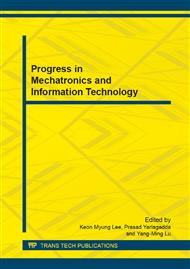p.448
p.452
p.458
p.462
p.466
p.472
p.476
p.483
p.487
Knowledge Reduction of Set-Valued Decision Information Systems Based on Tolerance Relation
Abstract:
Knowledge reduction is one of the main problems in the study of rough set theory. This paper deals with knowledge reduction of set-valued decision information systems based on tolerance relation. The concepts of distribution reduct based on set-valued decision information systems is introduced. The judgement theorems and discernibility matrices associated with the tolerance relation were examined, from which we can obtain the specific operation methods to inconsistent set-valued decision information systems.
Info:
Periodical:
Pages:
466-471
Citation:
Online since:
November 2013
Price:
Сopyright:
© 2014 Trans Tech Publications Ltd. All Rights Reserved
Share:
Citation:


